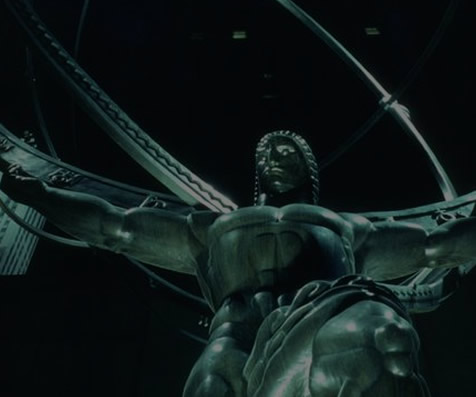Robert McDonald appointed CEO & P&G
Robert McDonald appointed CEO & P&G
Robert McDonald appointed CEO & P&G
Procter & Gamble Co. is replacing longtime Chief Executive A.G. Lafley with a former Army Ranger and 29-year company veteran, just as the tough economy and new rivals are forcing it to revamp the way it has done business for decades.
On Tuesday, the board of the consumer-products giant is expected to approve the appointment of 55-year-old Robert McDonald, now chief operating officer, as its CEO, according to people familiar with the matter. Mr. Lafley will remain chairman. A P&G spokeswoman declined to comment.
Procter & Gamble Chief Executive A.G. Lafley, who is expected to step down July 1, took the company up-market and doubled its sales.
The transition, expected on July 1, comes at a crucial juncture for the 172-year-old company, which has made brands like Crest, Pampers and Tide into household names, helped invent modern consumer-product marketing and schooled a universe of managers who went on to become top executives at companies including Microsoft Corp. and General Electric Co.
During nine years as CEO, Mr. Lafley revitalized P&G's business, orchestrating a $57 billion acquisition of Gillette Co. and more than doubling sales to $83.5 billion in the fiscal year ended June 2008. Central to his strategy was moving toward beauty and premium household products with higher profit margins.
The recession has dented his otherwise-sterling tenure. Mr. Lafley hands over the reins just as consumers are turning away from some of those products, and investors are questioning whether the company has become too big to grow at a high rate. Mr. McDonald will have to convince investors that P&G's brand-name products can continue to attract increasingly cost-conscious shoppers, and that expansion into developing markets will reap profits big enough to offset slowing results in North America and Western Europe. In May, P&G issued a sharply lower-than-expected earnings forecast for the fiscal year starting July 1.
P&G Operating Chief Robert A. McDonald is expected to take over as investors question whether the company is too big to grow at a high rate.
Transition Timing
Though Mr. Lafley, who is about to turn 62, is leaving earlier than many observers expected, someone close to P&G said this transition timing has been in the works for at least two to three years and isn't related to any dissatisfaction with his performance. According to another person close to the company, Mr. Lafley has been pushing to leave his CEO post for a couple of years but the board wasn't keen for him to leave.
As chairman, Mr. Lafley, long a mentor to his successor, expects to play a hands-on role in managing the company, said a person familiar with the matter.
Mr. McDonald will have to guide a recent strategy at odds with the time-tested secret of P&G's success: continually adding "new and improved" features to staples and persuading consumers to pay more for them. The recession is testing that approach, as private-label and other less-expensive brands compete with P&G products.
Each business at P&G is working to reach more consumers by widening the price range of its products. In recent quarters, cheaper products such as Luvs diapers and Gain detergent have outpaced sales increases of their premium-priced sister brands, Pampers and Tide.
Mr. McDonald assumes the top post of one of America's biggest corporate success stories. P&G says its products are used by people world-wide three billion times a day. Its 138,000-plus employees are spread over 80 countries. Some 23 P&G brands post more than $1 billion each in annual sales.
As a leader, Procter & Gamble CEO A.G. Lafley broke down decision-making into steps and showed good judgment with moves like the purchase of Gillette, says author and professor Noel Tichy. Originally published in October 2008.
Mr. McDonald, a West Point graduate, served as a U.S. Army captain, mostly in the 82nd Airborne Division. Jumping out of airplanes appealed to him because it added $110 to his $300 monthly salary, he recalled in an interview last month: "That was a lot of money to me then."
After five years in the Army, Mr. McDonald says, he missed the strict meritocracy of West Point and realized the military career path he was on would keep him away from his family too much. The decision to pursue a marketing career at P&G was an easy one, he says. He rose quickly, managing brands including Solo detergent, Dawn dish soap and Tide.
As P&G sought to expand its reach beyond North America, he was one of the first managers sent to prove his abilities in a foreign market. He spent the 1990s in Asia, overlapping with Mr. Lafley's leadership there.
In 2004, Mr. McDonald was named a vice chairman. As chief operating officer, his post for the past two years, he has tried to make P&G's sprawling manufacturing facilities and transportation system more efficient.
As P&G looks to emerging markets for a bigger portion of its profits, Mr. McDonald has led the effort to shift more production there. In December, he announced what he called "the most ambitious expansion program in our company's history," which includes plans to build about 20 new manufacturing facilities over the next four years, mostly in developing markets.
His efforts to overhaul P&G's transportation system, which is among the biggest in North America, include installing technology somewhat like an air-traffic-control system that precisely tracks the movement of trucks and reduces empty-truck miles.
West Point Ambitions
Mr. McDonald grew up near Chicago, where his ambition was evident early on. As an 11-year-old, he wrote to his congressman to request admission into the U.S. Military Academy at West Point. In his teen years, he persuaded school administrators to let him take typing and speech classes to develop two skills he hoped would help him succeed if he got into the academy. He did, and graduated 13th in a class of 875 with a degree in engineering in 1975, Mr. McDonald says.
Today, he speaks in reverential tones of his West Point years, and current colleagues say he still mentions the Cadet Honor Code, which says that "a cadet will not lie, cheat, steal or tolerate those who do."
The day of his P&G job interview, Mr. McDonald dined with Mr. Lafley, who was to be Mr. McDonald's company mentor because they shared military careers prior to P&G. As their company careers crisscrossed over the years, the two would rib each other about their military days. Mr. Lafley's stories of his Navy experience included how he honed his merchandising and marketing skills while working at a Navy Exchange in Japan.
The appointment of Mr. McDonald, who turns 56 next week, caps a years-long succession race. Since at least 2006, Susan Arnold, a 55-year-old executive, and Mr. McDonald had been in a contest to be the next CEO, people close to the matter said.
The competition seemed to be winding down in March when Ms. Arnold said she would leave the company later this year. That left Mr. McDonald as the second-most-powerful executive at P&G after Mr. Lafley.
As P&G formed its succession plans, worries grew that executives passed over would leave while still young enough to get a CEO position elsewhere. That scenario could now unfold, executive recruiters said.
In recent months, Mr. Lafley tried to quell speculation about his retirement. He scoffed at the idea when asked at an analyst conference in December, saying, "We're going to stay together, and we have a lot left to do."
Mr. Lafley's legacy will be a turnaround that included selling Crisco shortening, Folgers coffee and other sluggish food brands. He poured money into the beauty business, brands like CoverGirl cosmetics and Pantene shampoo, that became the biggest contributor to sales and profit gains during Mr. Lafley's tenure, the company says.
His giant Gillette deal gave P&G a solid footing in men's grooming and a bigger stake in developing markets. But lately some investors have questioned whether it has made P&G too big to keep posting large gains.
Mr. McDonald will have to decide whether to retain certain Gillette businesses that are tangential to P&G's core strategy, including its Braun appliance unit and Duracell batteries.
As reported in the Wall Street Journal
Boutique executive search services with best in class global network, contacts and market mastery.
Deeply connected and engaged personal service approach, long-term investment in client community and 25 year history of strong relations with both Multi-National leaders and Private Equity partners.






